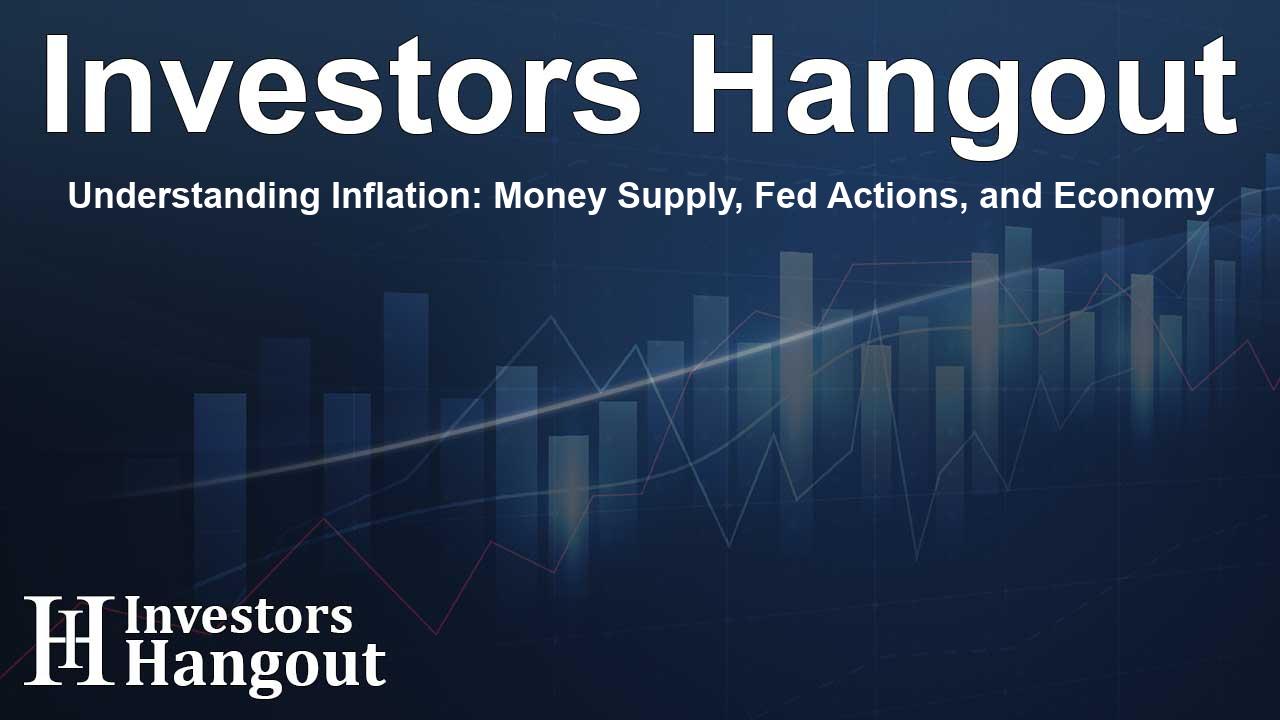Understanding Inflation: Money Supply, Fed Actions, and Economy

Exploring Inflation and Key Economic Indicators
The debate surrounding money supply, fiscal deficits, and quantitative easing (QE) often leads many to believe that these factors inevitably cause inflation, reminiscent of the conditions of the 1970s. The inflationary pressures witnessed in recent years could easily reinforce this notion. However, it’s essential to analyze whether historical context supports this view, or if alternative drivers have been at play during recent inflation episodes. This article aims to delve into the money supply, primarily represented by M2, the federal budget deficit, the history of QE, and their correlation to inflation.
To kick things off, let’s examine the money supply. A prevalent argument among those who expect inflation to resurface revolves around increased money supply, claiming that governments are essentially 'printing money out of thin air' and diminishing the dollar's value. However, this perspective harbors some misconceptions.
The first misapprehension lies in comparing the dollar's inflation-adjusted worth over decades, concluding that it has lost purchasing power since 1900. While it’s true that the dollar’s value has diminished over time, it’s crucial to recognize that many economies globally have experienced similar inflationary trends.
What often goes unnoticed is that the dollar has held its value comparably against other currencies despite an expanding money supply. Current evaluations show that today’s dollar has a purchasing power akin to that of 1980, even as the money supply rises. Notably, an increase in the money supply has historically shown a tendency to strengthen, rather than weaken, the dollar.
Another fallacy is the direct correlation suggesting that increases in money supply result in inflation. Contrary to this belief, historical data indicates that fluctuations in money supply haven’t always translated into inflation, aside from unique situations like the COVID-19 pandemic where the balance of supply and demand shifted dramatically. During other major events, increased money supply coincided with recessionary or deflationary trends.
For instance, from 2009 through 2019, the inflation rate remained stable, even dipping below long-term averages alongside rising money supply. This leads us to a critical observation: despite engaging in money creation, the consequences on inflation were hardly reflected in soaring prices.
During one debate, claims were made asserting that growing 'money printing' would result in elevated inflation and interest rates. Yet, it’s essential to reiterate that the government doesn’t merely print money. Instead, the U.S. Treasury maintains fiscal discipline by issuing debt as needed to cover obligations surpassing current revenues. Thus, the notion of unrestricted money printing doesn’t hold in the context of truthful fiscal operations.
The Federal Deficit and Its Impact on Inflation
Another argument posited was that the federal deficit could instigate inflation and surge interest rates. To appreciate this argument, we must recognize how the federal deficit arises from government fiscal operations. For the sake of clarity, let’s look briefly at current federal budget allocations, which showcase the magnitude of deficit spending.
In recent analyses, it has emerged that a vast majority of tax revenue is consumed by non-productive spending. In financial year analyses, such insights reveal that the government allocates an overwhelming portion of its expenditure towards social welfare programs and servicing existing debt. In fact, only a fraction of total spending is financed by actual revenues.
This poses a significant question: If such spending is predominantly non-productive, can it effectively stimulate economic growth? Historical perspectives indicate that non-productive spending typically yields little to no positive impact on economic metrics.
Viewing the relationship between federal debt as a percentage of GDP against potential economic growth, it becomes apparent that rising debt correlates with decreasing growth potential. The crux of the matter is that economic activity – and consequently inflation –spikes in response to increased demand, a pattern not easily observed amidst rising deficits.
From observing historical patterns, there appears to be an inverse relationship between federal deficits and inflation rates, with inflation rates often rising as deficits decrease during stronger economic conditions. Conversely, during periods of economic stagnation, federal deficits tend to rise as a compensatory measure to cover declining tax revenues while aiming to sustain necessary government operations.
The Role of Quantitative Easing in Inflation Dynamics
Moving forward, discussions frequently touch on the effects of QE, with arguments spanning the notion that the Federal Reserve learned critical lessons post-2020. The consensus among economists indicates that while the Fed is cautious, it recognizes that QE itself wasn’t a catalyst for the inflation experienced in its wake; instead, other factors played crucial roles.
Understanding the mechanics of government funding via debt issuance reveals how QE doesn’t subsequently increase money supply directly. When the Federal Reserve enters a QE program, it effectively swaps assets with banks rather than injecting new money into the system. As a result, increased reserves within banks do not translate into immediate lending, maintaining low inflation overall.
Assessing Future Inflationary Pressures
To articulate the present economic narrative, it’s crucial to clarify that inflation fundamentally represents a rise in goods and services prices, shaped heavily by demand and supply dynamics. Recent governmental actions, particularly during the pandemic years, provide a vital case study in leveraging fiscal policy versus tangible supply challenges.
While significant stimulus measures ostensibly fostered heightened demand, they met stark supply limitations during economic shutdowns leading to price surges. This unique set of circumstances created a “perfect storm” resulting in inflated demand against constrained supply.
Moving ahead, it's vital to appreciate that inflation isn’t inherently coupled with increases in deficits or the Federal Reserve’s actions. Historical precedence shows a trend where sustained unproductive debt correlates with diminished growth potential and inflationary pressure over time.
While the economic landscape could shift due to unforeseen circumstances, substantial inflationary pressures aren’t expected to resurface under normal conditions without significant supply-demand distortions. Thus, stakeholders must take a prudent outlook on prevailing trends while preparing for potential disinflationary phases ahead.
Frequently Asked Questions
What causes inflation in an economy?
Inflation occurs when there is an increase in demand for goods and services exceeding their supply, leading to rising prices.
How does the money supply affect inflation?
Historically, changes in the money supply haven’t consistently resulted in inflation, but unique events can cause shifts that influence price levels.
What role does government spending play in the economy?
Government spending can stimulate or depress economic activity depending on whether it focuses on productive investments or non-productive expenditures.
Is quantitative easing inflationary?
Quantitative easing itself does not directly create inflation, as it primarily functions as an asset swap rather than new money creation.
Why might inflation not return in the near future?
Unless substantial economic disruptions occur, inflation is less likely, particularly given the unproductive nature of current deficits and spending.
About The Author
Contact Addison Perry privately here. Or send an email with ATTN: Addison Perry as the subject to contact@investorshangout.com.
About Investors Hangout
Investors Hangout is a leading online stock forum for financial discussion and learning, offering a wide range of free tools and resources. It draws in traders of all levels, who exchange market knowledge, investigate trading tactics, and keep an eye on industry developments in real time. Featuring financial articles, stock message boards, quotes, charts, company profiles, and live news updates. Through cooperative learning and a wealth of informational resources, it helps users from novices creating their first portfolios to experts honing their techniques. Join Investors Hangout today: https://investorshangout.com/
The content of this article is based on factual, publicly available information and does not represent legal, financial, or investment advice. Investors Hangout does not offer financial advice, and the author is not a licensed financial advisor. Consult a qualified advisor before making any financial or investment decisions based on this article. This article should not be considered advice to purchase, sell, or hold any securities or other investments. If any of the material provided here is inaccurate, please contact us for corrections.
